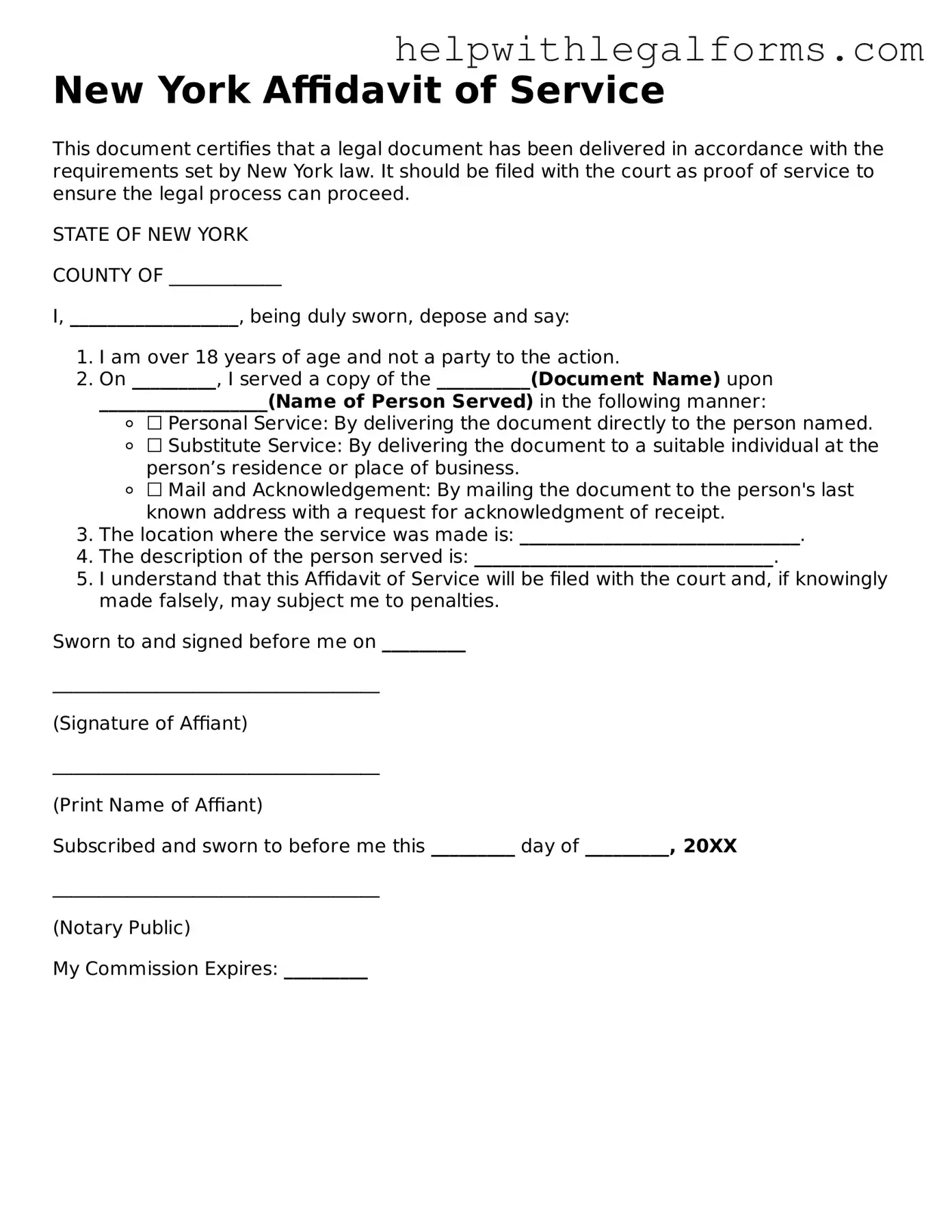What is an Affidavit of Service?
An Affidavit of Service is a document that verifies the delivery of legal papers to a party involved in a legal proceeding. It's used to confirm that the individual served has been officially notified of the action or proceeding in which they are involved. The person who delivers the documents, often a process server, completes this affidavit.
Why is an Affidavit of Service important in New York?
In New York, as in other jurisdictions, the Affidavit of Service plays a critical role in the legal process. It ensures that the process of notifying involved parties is transparent and verifiable, maintaining the integrity of the legal system. This document proves to the court that the party has been properly notified, which is a prerequisite for the case to proceed.
Who can serve legal documents and complete an Affidavit of Service in New York?
Generally, any person who is over 18 years of age and not a party to the case can serve legal documents and complete an Affidavit of Service in New York. Professional process servers are often used for this purpose, especially in cases where it might be difficult to locate the party or anticipate a refusal of service. Special rules can apply, so it's important to be familiar with the specific requirements of the jurisdiction where the case is being heard.
What information must be included in an Affidavit of Service?
An Affidavit of Service must include detailed information that proves the documents were properly delivered. This includes the date, time, and place of service; a description of the person served; and the manner in which the documents were served (e.g., in person, by mail, or by another method permitted by law). It must also be signed by the server in the presence of a notary public, who also signs the affidavit.
What happens if an Affidavit of Service is not filed or is improperly completed?
If an Affidavit of Service is not filed with the court, or if it is improperly completed, it may delay the legal process. The court might not be able to proceed with hearings or judgments until it has proof that all parties were properly notified. Incomplete or incorrect information can lead to the service being deemed invalid, requiring the documents to be served again and a new affidavit to be submitted. This underscores the importance of ensuring the accuracy and completeness of this document.
